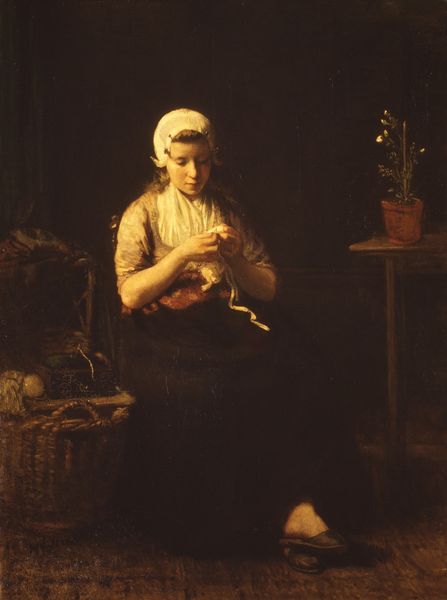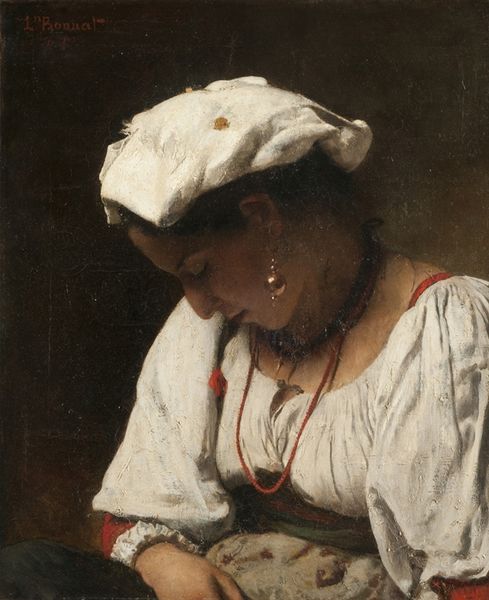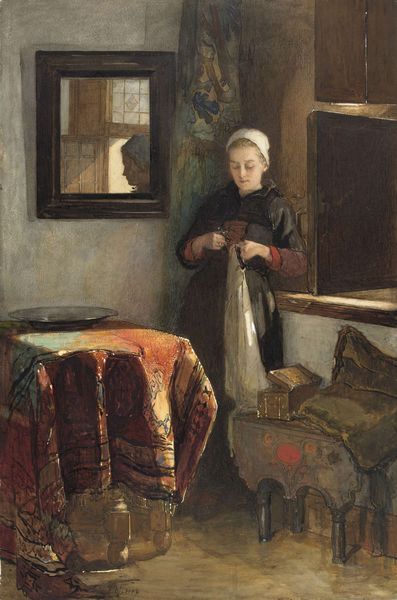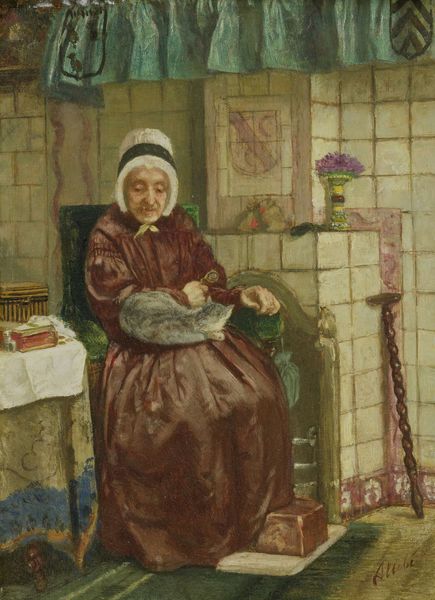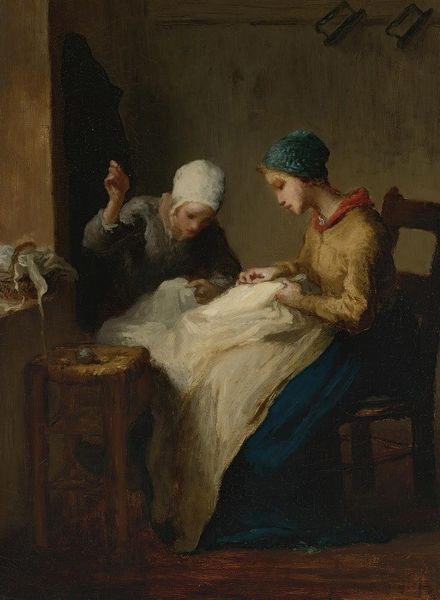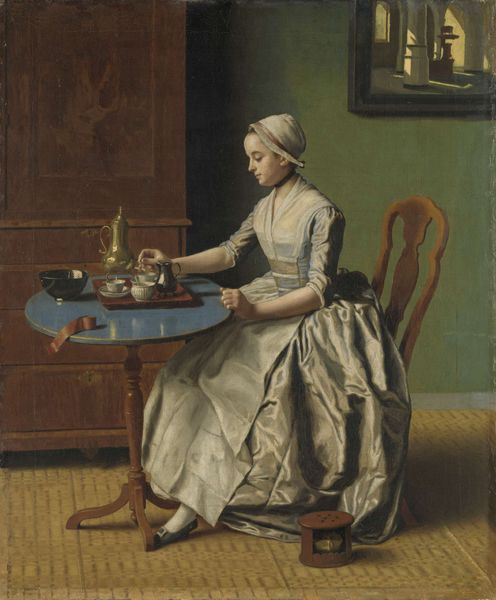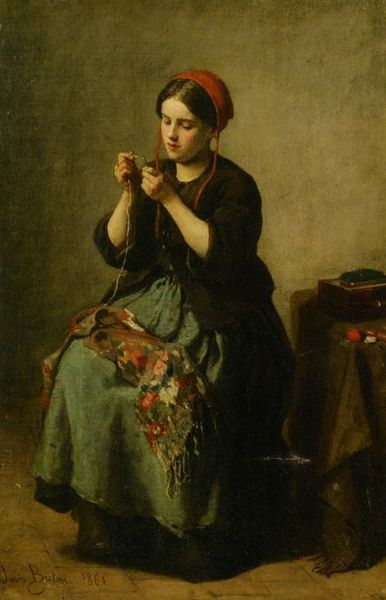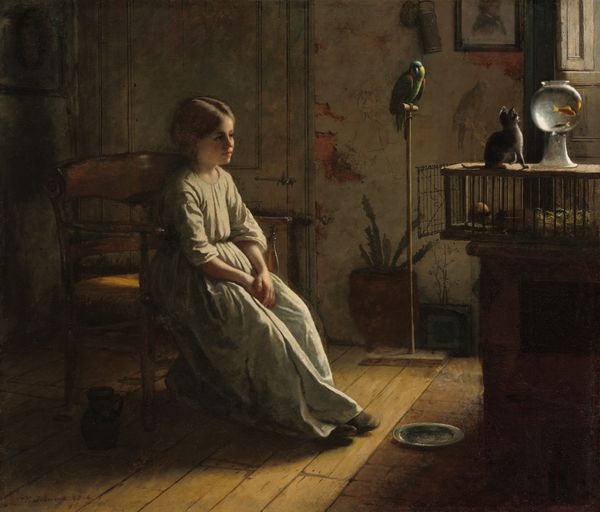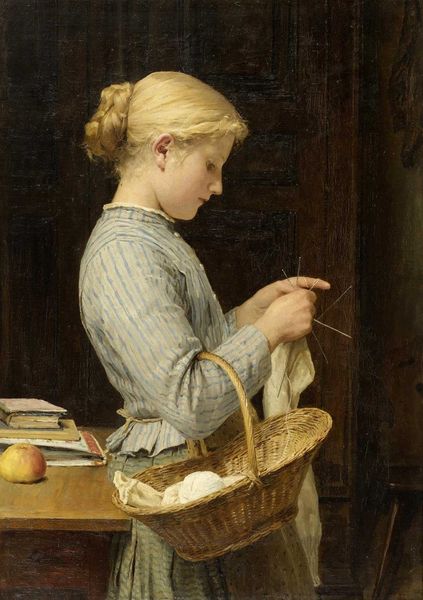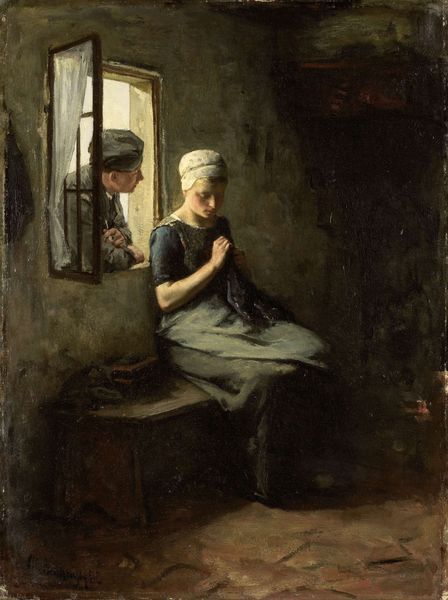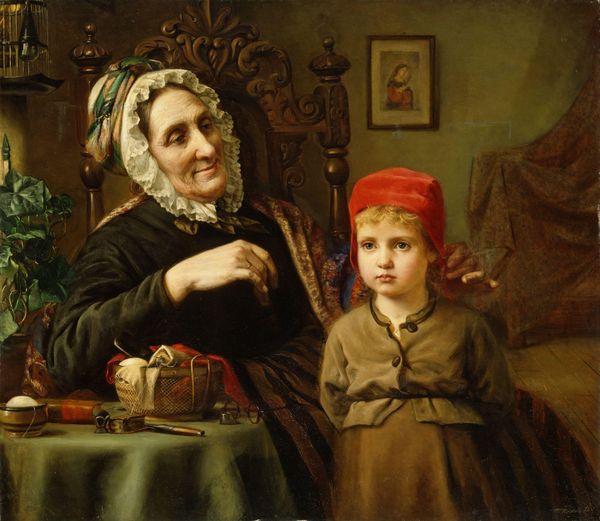
Copyright: Public domain
Jules Breton painted "The Little Seamstress" in 1858, capturing a young woman absorbed in her sewing. The image speaks volumes about the social conditions of 19th-century France, a period marked by industrial growth but also persistent rural poverty. The seamstress represents a segment of the working class, often young women, who labored at home, contributing to the family income through piecework. Breton, known for his depictions of peasant life, presents a romanticized view, yet it hints at the economic realities forcing young girls into labor. The painting prompts us to consider the social structures and economic systems that shaped individual lives. To understand it better, one can delve into archives documenting labor practices, family economies, and gender roles of the time, offering insight into the lives of the working class in mid-19th century France. Art serves as a window into the past, contingent on social and institutional contexts.
Comments
No comments
Be the first to comment and join the conversation on the ultimate creative platform.
